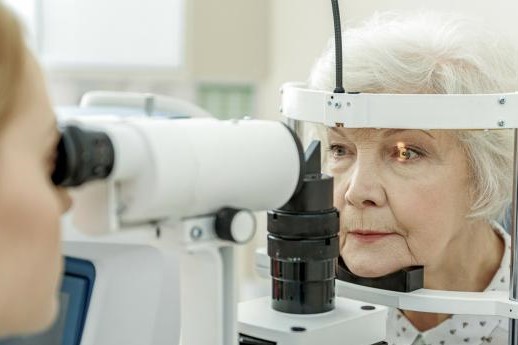
What is maculopathy, or macular degeneration
Macular degeneration, also known as maculopathy, is a disease that generally manifests itself with advancing age (after the age of 50) and involves a progressive loss of vision in the central area
Around 3.5 million people in Italy suffer from it. Early diagnosis, with regular eye examinations, is the most powerful weapon for combating maculopathy and making the best use of therapies.
What maculopathy is and what causes it
Maculopathy is a pathology involving the macula, i.e. the region of the retina located in the centre of the eyeball, where the physical-chemical processes that condition the sensory mechanism of vision take place.
The causes of the onset of this disease are not entirely known, but it mainly appears in people over 50 years of age, as it is with advancing age that the delicate cells of the macula are damaged, causing a progressive loss of vision in the central area.
Age-related macular degeneration (AMD) is the most common form of maculopathy and is generally distinguished in:
- Atrophic macular degeneration
- Exudative macular degeneration
In 90 per cent of cases, this is atrophic maculopathy, in which the retina thins because the visual cells stop functioning and disappear. In this case, vision loss is gradual and there is no treatment.
In exudative maculopathy, abnormal vessels appear that ooze serum or bleed, which then stimulates the formation of a scar.
This form can be blocked by laser, but only if treated early when the abnormal vessels from which fluid is oozing are not in the centre of the macula.
Symptoms and diagnosis of maculopathy
Age-related macular degeneration (AMD) does not cause pain.
In fact, initially the visual problem may not be noticed, because it is compensated with the eye still being healthy.
The first symptoms are usually
- distortion of images (metamorphoses), whereby objects appear distorted and/or shrunken;
- a spot of central ‘darkness’ appears in the vision that returns, for example, the outline of the clock but not the time shown.
This development can occur rapidly or over a period of months and tends to involve both eyes over time.
This is why it is advisable to have an eye check-up every year, during which the ophthalmologist specialist, by means of a fundus examination and retinal angiography, can make a definite diagnosis of maculopathy and intervene with certain treatments.
Read Also:
Emergency Live Even More…Live: Download The New Free App Of Your Newspaper For IOS And Android
Red Eyes: What Can Be The Causes Of Conjunctival Hyperemia?
Autoimmune Diseases: The Sand In The Eyes Of Sjögren’s Syndrome
Corneal Abrasions And Foreign Bodies In The Eye: What To Do? Diagnosis And Treatment
Covid, A ‘Mask’ For The Eyes Thanks To Ozone Gel: An Ophthalmic Gel Under Study
Dry Eyes In Winter: What Causes Dry Eye In This Season?
What Is Aberrometry? Discovering The Aberrations Of The Eye
Dry Eye Syndrome: Symptoms, Causes And Remedies
What Is Macular Pucker And What Are The Symptoms


